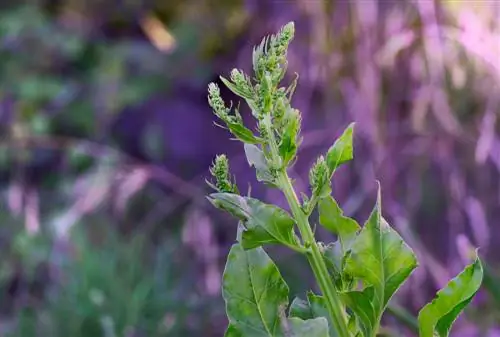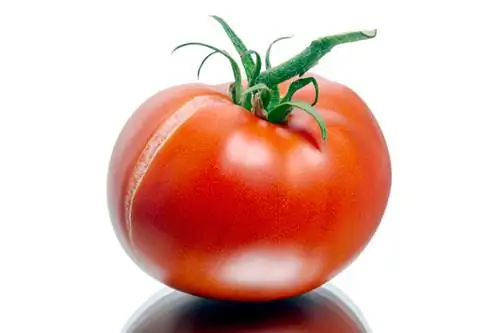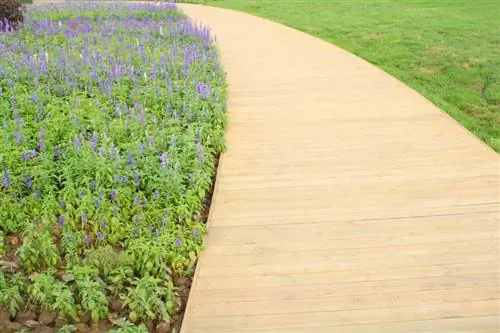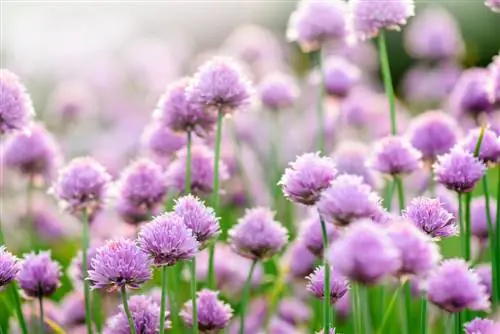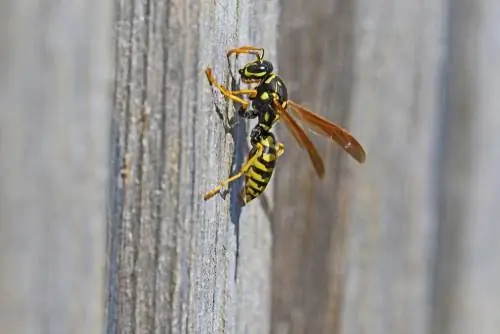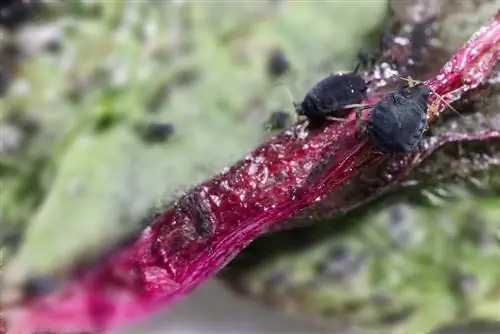- Author admin [email protected].
- Public 2023-12-16 16:46.
- Last modified 2025-01-23 11:22.
It is a nuisance when the chard culture shoots early despite all efforts. This premature flower development is due to various causes that you should investigate. With a little luck, you can continue to cultivate plants that develop inflorescences.
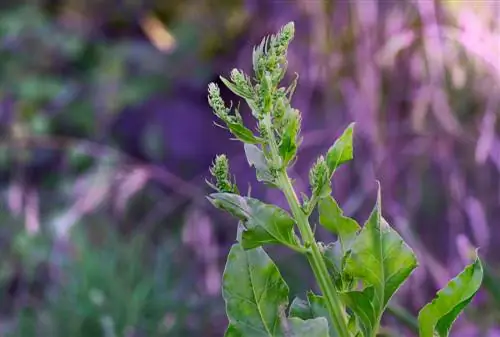
Why does chard shoot and how can I prevent it?
Chard shoots when it is exposed to a cold phase or suboptimal site conditions, such as prolonged drought, extreme temperatures or an unbalanced nutrient supply. To prevent shooting, pay attention to optimal growing conditions, location selection and care.
How chard grows
The vegetable plant is a form of turnip and belongs to the subspecies Beta vulgaris subsp. vulgaris. They grow biennially and in the first year they form the vegetative part, which consists only of leaf mass. The leaves are harvested after a growth period of between 80 and 90 days. If sowed in spring from the end of March to April, chard leaves will be ready to harvest from July. For autumn pruning, sow the seeds from July to mid-August.
Why does chard shoot?
The plant needs a cold phase so that it can develop flowers. Therefore, inflorescences appear in the second year after the temperatures have fallen below ten degrees. Suboptimal site conditions also cause chard to shoot.
Influencing factors:
- Long-lasting dry periods with temperatures that are too warm
- Nutrients are not adapted to needs
- Danger of cold exposure if sowing too early
Observe requirements
If you observe the cultivation dates for chard, you ensure optimal growth conditions. Direct sowing in spring tends to shoot more often than sowing in late summer. The last cultivation of stem chard takes place in early September, so you can harvest the leaves in autumn and winter. Chard leaf comes into the bed by the end of July.
Location and soil
Chard thrives in sunny conditions and tolerates partial shade for short periods. The substrate has a good ability to store moisture and provides a loose structure. A high humus content ensures sufficient nutrients.
Care properly
The vegetable plant is one of the heavy feeders. After you have supplied the soil with compost (€12.00 on Amazon) or an organic long-term fertilizer before sowing, top-fertilization is necessary after six to eight weeks. Due to the high water requirement, regular watering is necessary. Uniform soil moisture reduces the risk of premature flower development.
Tip
The flowers arise in the leaf axils of strongly stretched shoots. As soon as you notice such shoots, you should break them out. With a little luck, the chard will continue to grow normally and form enough leaf mass again.
What you need to know about harvesting
You can harvest Swiss chard for the first time after about two months. Swiss chard requires around three months to produce vegetables that are ready for harvest. The procedures do not differ for stem and leaf chard. Work from the outside in and always cut the outer leaves close to the ground. If you leave the heart intact, the vegetable plant will produce fresh foliage until fall. Due to the short shelf life, you should only harvest as much as you can use in a short period of time. The younger the leaves are, the more tender they taste. They are suitable for baby leaf salads.

